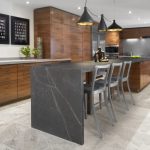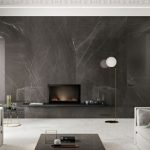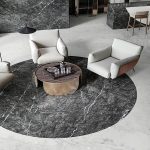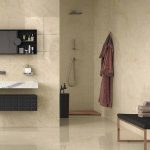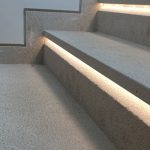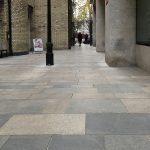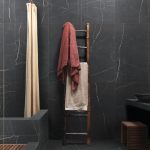Mechanical and Chemical Stone Finish Types
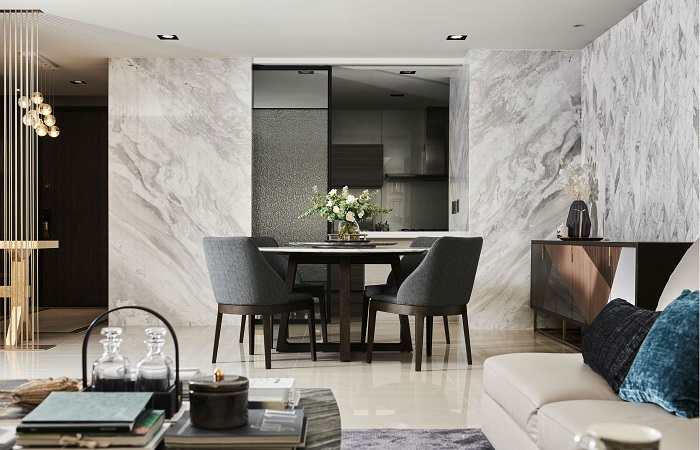
Mechanical and Chemical Stone Finish Types
Surface finishing is the treatment that brings out the esthetic features of the material. The ornamental function and also some technical characteristics are strongly influenced by the surface finishing applied to the product. Depending on the treatment, we can divide the finishing into mechanical, impact and chemical methods.
Method 1: Mechanical Finishing
In mechanical finishing, the stone is put in contact with an abrasive. This is done to reduce the original surface roughness to some extent.
Rough Finish
Though infrequent, sometimes the sawn material or even just-quarried material is ready for installation and needs only to be cut to size. The surface in this case is generally rough, with an uneven face. Rough stone is predominantly used outdoors. This is appreciated for its non-slip quality. It is often used with slate and with some kinds of sandstone.
Polished Finish
Polishing is the main and most frequently applied finish. It follows the finest honing and employs polishing abrasives. The abrasives add brilliance with mirror effect to the stone surface.
Honed Finish
This finishing aims to produce a smooth surface by using abrasives of ever finer grain on the surface. Thus, there is not a single honing but a series of progressive degrees of it. Honed finish is not reflective and makes the color tones slightly dull, but the treatment preserves the material’s natural esthetic characteristics.
Brushed Finish
Brushed finish is obtained by applying hard plastic or metal brushes to the stone surface. The heavily action removes the softer part of the stone and wears out the surface, giving it a look similar to that of antique finishing.
Bush-hammered Finish
Bush-hammering is done by hammering the stone with a series of steel points to break up the surface and create a pitted look. Similar to the flamed finish above, bush-hammering is a technique for creating highly slip-resistant surfaces. Like all the processes, it can be done to a greater or lesser degree. It can also be used to recreate the look of a medieval finish, as though the stone had been chiseled by hand centuries ago.
Method 2: Chemical Finishing
Chemical finishes are applied to stone in order to produce reactions that transform the material surface, or they are employed together with other types of treatment in order to improve their characteristics. These finishes can also be applied to cut, or even installed, materials.
Acid Wash Finish
Acid washing has a corrosive action on the stone. It can be used to obtain different effects depending on the material, the chemical, and finally, the processing time. Finishes can range from simple superficial cleaning of the material to a more definite ruggedness, similar to that achieved by water finishing. Acid washing is sometimes used to obtain an antique finish in place of the impact method. It is possible to acid wash already cut pieces or, with appropriate precautions, already installed ones. Some chemicals produce other results affecting the aspect of the stone but not its roughness. These are acids that remove oily or rust spots on the material.
Sandblasted Finish
Sandblasting is a technique that also gives a more slip-resistant surface suitable for outside areas or for wet areas. We have used this on shower trays and wet-rooms and also on patios. It is created by spraying the surface with sand, ceramic beads or other abrasive components at a high pressure onto the surface of the stone. This process tends to lighten the look of the stone and can mask the character by hiding the veins and shell fossils.
Polished Finish
Just as with marbles and polished limestone, travertine is normally only used for special applications such as bathroom and kitchen flooring. In this case, protection is assured by the use of special water-and-oil-repelling products which protect the surface without generally changing its look. After application of these products, a surface residue can crop up. This must be removed after drying, from 4 to 24 hours after treatment according to the type of solvent used in non-walkover areas such as: vanity tops, cook tops, thresholds, etc.
Honed Finish
The difference between this type and the preceding lies only in the polish of the surface, so that the same types of protective treatments recommended above can be used also in this case. We can also recommend an alternative wax treatment, whereby this type of surface can be treated with two applications of a matte-finish wax, which is then obviously not polished. We can recommend this type of treatment in cases in which the customer, having chosen a smooth but opaque surface finish, wishes to keep the finish unchanged.
Antiqued/Tumbled Finish
One of the most widely used materials employed to create tumbled stone is travertine, in all its colors: Roman, Walnut, Red, Yellow, Peach, etc. The recommended treatment in this case consists of applying a base coat of a product, such as the usual non-filming, solvent-based water and oil proofing or the more recent analogous water-based type of product, to ensure uniform absorption. This must be followed by a couple of applications of one of the vast range of commercial waxes, depending on the intended use and the type of finish desired: from extremely brilliant, self-shining metallized waxes to opaque wax.
Flamed Finish
A flamed finish is created by passing an oxy-acetylene torch over the surface of the stone and then following it immediately with a cold pressurized jet of water to fracture the top surface of the stone. On some types of stone, such as limestone and sandstone, flamed finish gives a non-slip surface which is ideal for terraces or public paved areas. This is a specialized technique and not all quarries have this equipment in their workshops.
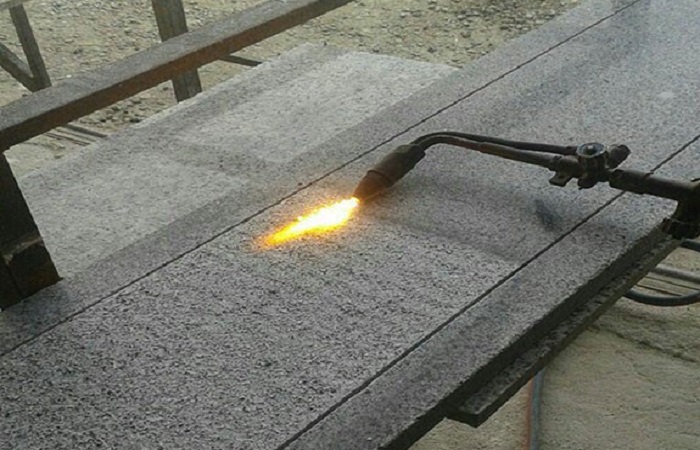
Brushed Finish
For those looking for a textured marble that stands up immaculately to wear, brushed may be the best option. As the name implies, brushed marble is a textured finish created by brushing the stone with hard nylon or steel. This finish is visually appealing and causes the marble to become resistant to scratches and marks.
To learn more about us, click here.
Send your price quotes directly to our WhatsApp through this Link: https://wa.link/ord5k8
Sources
www.marmol.com/designing-with-marble/20690/
neginstone.com/English/Stone-Finish-Types.html
- Back To Articles
- Acid Wash Finish, armani grey marble, armany grey, Brushed Finish, bush hammered finish, chemical finishing, flamed finish, gray marble, grey Armany, Honed Finish, marble finishing, marble production, Mechanical and Chemical Stone Finish Types, Mechanical Finishing, mevhanical finishing, Niayesh, NIAYESH STONE, petro grey, Pietra Grey Marble, Pietra Grey Marble Tiles, Polished Finish, Rough Finish, Sandblasted Finish, stone finishing
Article
Natural Stone Applications
- 22 December 2022
Iranian Stones Introduction According to Source and Quarry
- 21 December 2022
Technical Stone Introduction and Quarrying Procedures
- 21 December 2022
Categories
- blog757
- news1
- Specialized articles756

